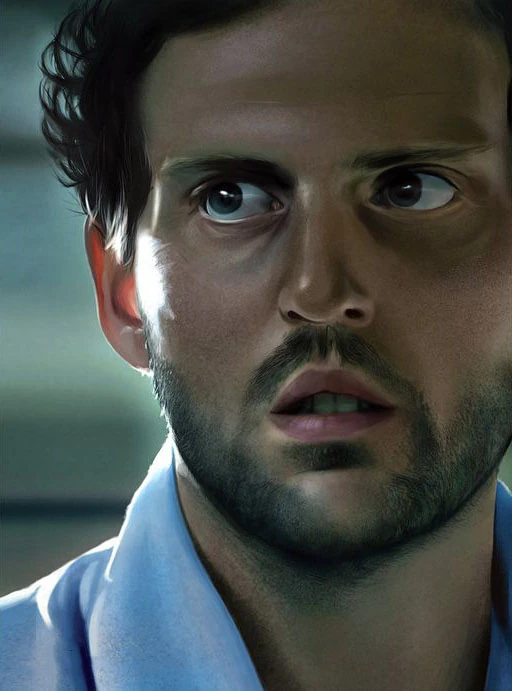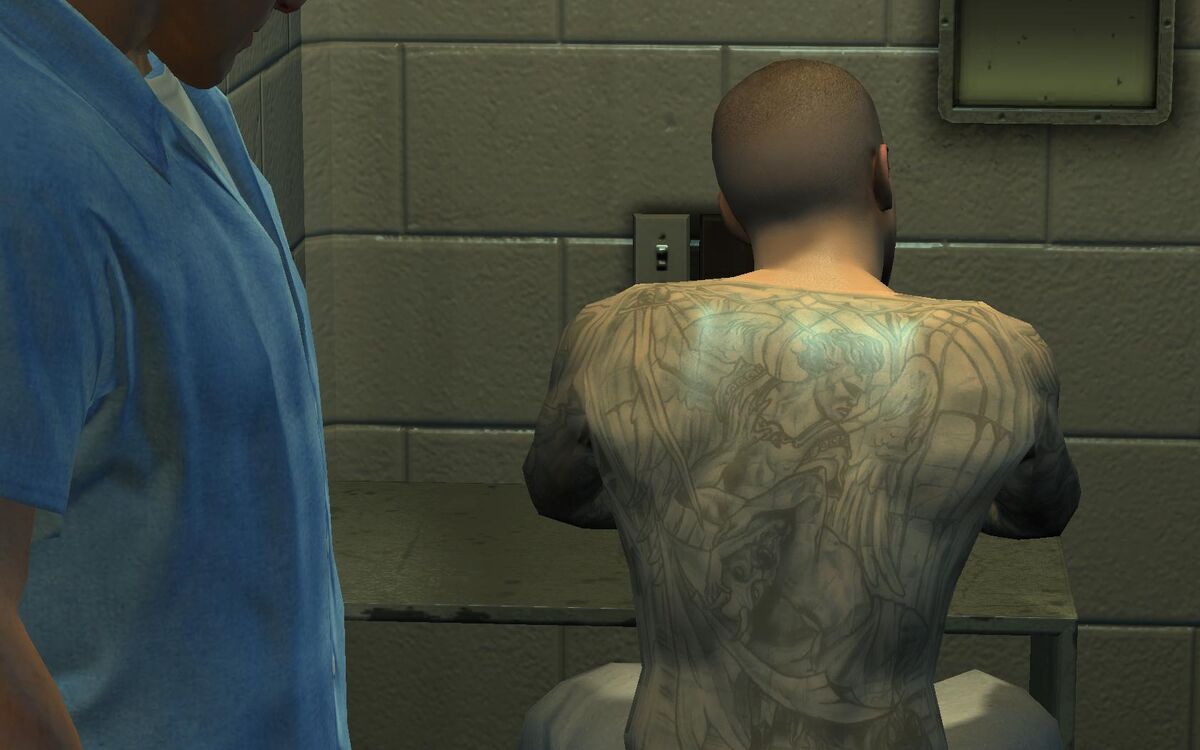Prison Break's Haywire: The Tragic Story Of Charles Patoshik
Could a brilliant mind, capable of grasping complex mathematical concepts, be simultaneously fractured by the very nature of its own existence? The tragic figure of Charles "Haywire" Patoshik, a character from the acclaimed television series Prison Break, offers a chilling exploration of this question, embodying the devastating intersection of genius and mental illness.
Haywire's story, though fictional, resonates with a stark realism that stems from its unflinching portrayal of schizophrenia. His journey begins with a heinous act: the murder of his parents, an event that lands him behind bars at Fox River Penitentiary. It's within the confines of the prison's psychiatric ward that his narrative truly unfolds, showcasing the torment and unpredictable nature of his illness. Haywire's ability to perceive and understand the intricate tattoos of Michael Scofield, the protagonist of Prison Break, inadvertently draws him into the escape plan, highlighting his unique perspective, even amidst his struggles.
The character's descent is a tragic tale of a man wrestling with his own demons, ultimately meeting a grim end, a suicide, facilitated by the manipulative influence of Agent Mahone. Haywire's final moments encapsulate the profound sadness of a life consumed by mental illness, leaving a lasting impact on viewers and solidifying the character's place as one of the most unforgettable and affecting figures in television history. His presence in the show is a testament to the power of the written word and acting prowess to deliver a powerful and memorable experience.
| Full Name: | Charles "Haywire" Patoshik |
| Occupation: | Prison Inmate (formerly Mathematician) |
| Played By: | Silas Weir Mitchell |
| Notable Characteristics: | Schizophrenia, Mathematical Genius, Obsession with Tattoos, Socially Awkward |
| Education: | Doctorate in Mathematics from Harvard University |
| Awards: | Winner of Four "Mathematician of the Year" Awards |
| First Appearance in Prison Break: | Season 1, Episode 3 |
| Cause of Death: | Suicide |
| Location: | Fox River Penitentiary, Psychiatric Ward |
| Key Relationships: | Michael Scofield, Agent Mahone |
| Memorable Quotes: | "The colors... the lines..." (referencing Michael Scofield's tattoos) |
| Impact on the Series: | Added complexity to the storyline and presented a realistic portrayal of mental illness |
| Portrayal of the Character: | Mitchell's depiction of Haywire in Prison Break received much praise and recognition |
| First appearance: | "Fly" (September 25, 2006) |
| Other Appearances: | My Name Is Earl, Grimm, Cold Case |
| Source: | Prison Break Fandom Wiki |
The narrative of Haywire, as a character, takes a turn when he finds himself on the run, escaping Fox River Penitentiary. He is depicted in a series of scenes and events that give depth and context to his mental state. The story sees him in Algoma, Wisconsin, where, driven by desperation, he steals supplies from a disabled shopkeeper. He flees the scene, inadvertently acquiring an unlikely companion: the shopkeeper's dog, a border collie. This fleeting connection with the dog provides a poignant contrast to his inner turmoil and the isolation he experiences. He even envisions a life of relative peace, planning to construct a raft and reside in a windmill in Holland. The story, in this sequence, becomes a symbol of fleeting dreams and shattered realities.
The casting of Silas Weir Mitchell was a stroke of genius. His performance brought the character of Haywire to life with such intensity that it made him an unforgettable figure in the series. His ability to convey the internal struggles, the raw emotions, and the unpredictable nature of Haywire's personality was a testament to his acting skills. The character of Haywire was further fleshed out by the creative team, who saw an opportunity to showcase Mitchell's talent.
Haywires arc is a testament to the brutal realities of mental illness, demonstrating the struggle for understanding and the isolating effects of a mind in turmoil. The character's story is a reminder that even within the most extreme circumstances, there is a human element and that compassion and empathy are always vital.
The creative decisions behind Haywires story arc are particularly striking. His presence in the series was not merely a supporting role, but rather a crucial element that added complexity and depth to the show's narrative. The writers skillfully used Haywires character to explore themes of mental health, social isolation, and the challenges faced by those living with schizophrenia.
In one episode, Haywire, driven by his internal demons, finds himself in a critical juncture. He is cornered, and his future seems bleak. In a heartbreaking scene, he is persuaded to end his own life. This moment is powerful and devastating and underscores the character's tragic situation, a reflection of his inability to find peace within himself or the world around him.
The character is brought to Michael Scofield's attention and gets interested in his tattoos. This marks a significant moment in the story, as Haywire becomes aware of the intricate patterns on Scofield's body. Haywire, despite his mental health challenges, possesses a sharp intellect and sees an opportunity to analyze and decipher the cryptic images etched on Michael's skin. This connection between the two characters is at the heart of the story.
In the world of television, characters like Haywire are rare. They challenge viewers to confront difficult realities and reflect on the human experience with unflinching honesty. The character serves as a reminder of the importance of mental health, empathy, and the enduring power of the human spirit, even in the darkest of times.
The portrayal of Haywire, however, did not originate from nothing. His character was made possible by Silas Weir Mitchell, who is also known for other shows like "My Name is Earl", "Grimm", and "Cold Case". He brought a raw and authentic performance to the role, earning a place among the series' most memorable characters.
Haywire's story, while filled with sadness, also serves as a reminder of the complexities of the human mind and the need to approach mental illness with understanding and compassion. The events in his life, though tragic, are a testament to the power of storytelling to illuminate the often-hidden struggles of those living with mental health issues.
His academic background, a doctorate in mathematics from Harvard University, further complicated the narrative, creating a poignant juxtaposition. Here was a man of immense intellect, capable of grasping complex mathematical concepts, yet crippled by a mental illness that eroded his sense of reality. This contrast heightened the tragedy of his situation, emphasizing the profound impact of schizophrenia on his life.
The fact that Haywire also won four "Mathematician of the Year" awards added another layer to his tragic tale. It underscored the potential he possessed and the dreams that were forever out of reach due to his illness. It's a poignant reminder of how mental illness can shatter lives, even those with exceptional potential.
Haywire's association with the Fox River Eight, the group of inmates who escaped with Michael Scofield, further highlighted his role in the series. His inclusion in the escape plot was a testament to his unique perspective. Despite his illness, he contributed to the intricate plan, proving that even those with mental health struggles can have moments of clarity and impact.
The choice to cast Silas Weir Mitchell in the role of Charles "Haywire" Patoshik was strategic. Mitchell's experience, combined with his ability to inhabit his roles, made him the perfect choice. His portrayal was not only a masterclass in acting but also brought a sense of authenticity to the character, which resonated with viewers.
In the intricate tapestry of the Prison Break narrative, Haywire's story is a stark reminder of the importance of mental health awareness and the need for empathy. It is a powerful exploration of the human condition, underscoring the lasting impact of mental illness and its devastating effects.
In the episode titled "Fly," which first aired on September 25, 2006, Haywire makes his debut. The episode serves as a reminder of the series' unique ability to weave together multiple storylines to create a memorable viewing experience. The debut is also a moment where the character of Haywire starts to take center stage.
The sequence leading up to Haywire's demise is one of the most memorable and emotionally gripping moments in television history. The use of the environment, the tension of the scene, and the music come together to create an unforgettable experience. It's a scene that exemplifies the series' strength in creating immersive storytelling.
In the narrative of the Prison Break series, the setting, the situation, and the music are combined to create a lasting impact. The tragedy of Haywire is portrayed with artistic vision and makes the story more moving and memorable. His death, a moment of despair, stays with viewers long after the credits roll.
The character of Charles "Haywire" Patoshik, brought to life by the brilliant Silas Weir Mitchell, was imprisoned for a truly devastating act: the murder of his parents. This act not only defines the beginning of his life behind bars, but also acts as a starting point for his journey of self-discovery.
Haywire's initial connection with Michael, and their shared cell, eventually led to Haywire being transferred to the psychiatric ward as he tried to understand Michael's tattoos. This shift reveals the complexities of the prison system and its treatment of those with mental illness. The fact that he was able to decipher Michael's tattoos is testament to his intellect and highlights the character's unique perspective.
The impact of the character resonates throughout the series. The story of Haywire is one of courage, loss, and the human experience, which makes him one of the most memorable characters in television history. It's a reminder of how important mental health and compassion are and the ways in which we can approach the complex issues of the human mind.

